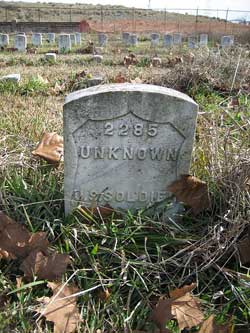Analyzing How Imagery, Diction, and Audience Advance an Author’s Purpose

Source: Battle of Gettysburg, Currier and Ives, Wikimedia Commons
Now we’re going to look at a poem that has to do with war. (Even poets have a purpose for writing.) Many of us think poets normally intend to entertain, but poetry can be very powerful in its ability to persuade or inform. In fact, much contemporary poetry is political in theme. You might also recognize political or social themes in hip-hop lyrics, which are poetry set to music.
In the poem you’re about to read, poet Stephen Crane suggests several purposes for his writing, but we need to look closely at the poem to identify his implicit purpose. We’ll look at his diction, imagery, and audience to see how well he advances his purpose.
For War Is Kind
Do not weep, maiden, for war is kind.
Because your lover threw wild hands toward the sky
And the affrighted steed ran on alone,
Do not weep.
War is kind.
Hoarse, booming drums of the regiment,
Little souls who thirst for fight,
These men were born to drill and die.
The unexplained glory flies above them.
Great is the battle-god, great, and his kingdom—
A field where a thousand corpses lie.
Do not weep, babe, for war is kind.
Because your father tumbled in the yellow trenches,
Raged at his breast, gulped and died,
Do not weep.
War is kind.
Swift blazing flag of the regiment,
Eagle with crest of red and gold,
These men were born to drill and die.
Point for them the virtue of slaughter,
Make plain to them the excellence of killing
And a field where a thousand corpses lie.
Mother whose heart hung humble as a button
On the bright splendid shroud of your son,
Do not weep.
War is kind.

Source: Spring Grove Cemetery & Arboretum - Civil War Soldier, David Ohmer, Wikimedia
Using your notes, write your answers to these questions. When you are finished, check your understanding.
- What assertion does Crane make in his title?
- What requests does the speaker make?
- He makes the assertion that war is kind. His title suggests that he is trying to persuade people that war is kind.
- He tells a maiden, a babe, and a mother not to weep. He also tells the readers they should point out to the soldiers the virtue of slaughter and the excellence of killing.
Close
Let’s look at Crane’s descriptions. As you read, think about Crane’s use of imagery. These sensory details help you form mental pictures. When readers picture the scenes described by writers, they often have an emotional reaction. Imagery of children stomping in rain puddles might make us feel happy, a description of a silly clown slipping on a banana peel will make readers laugh, but imagery describing someone robbing an older woman will make readers feel sad or even angry. In this way, a writer can play on your emotions and can more successfully persuade or entertain.
As you read through the poem, visualize what is happening in each stanza. Using your notes, write a quick description of what you see. Check Your Understanding after each stanza for a sample response.
Do not weep, maiden, for war is kind,
Because your lover threw wild hands toward the sky And the affrighted steed ran on alone,
What do you see?
Sample Response:First, I see a woman crying. Then I see a man calling out to God for help. Finally, I see a scared horse running off alone.
CloseHoarse, booming drums of the regiment,
Little souls who thirst for fight,
These men were born to drill and die.
The unexplained glory flies above them.
Great is the battle-god, great, and his kingdom—
A field where a thousand corpses lie.
What do you see?
First, I hear drums, and I see an army of men all excited as they prepare to fight a battle. Next, I see a field piled high with corpses.
CloseDo not weep, babe, for war is kind.
Because your father tumbles in the yellow trenches,
Raged at his breast, gulped and died,
What do you see?
Sample Response:I see a baby crying, and the baby's father wounded and falling into a trench on the battle field and dying.
CloseSwift blazing flag of the regiment,
Eagle with crest of red and gold,
These men were born to drill and die.
Point for them the virtue of slaughter,
Make plain to them the excellence of killing
And a field where a thousand corpses lie.
What do you see?
Sample Response:I see a flag flying high and a proud eagle flying over a battlefield. I see a person in a regiment telling soldiers that killing is a great thing. Then I see thousands of dead bodies again.
CloseMother whose heart hung humble as a button
On the bright splendid shroud of your son,
What do you see?
Sample Response:I see a mom holding a flag that was used as her son's shroud in a military funeral.
CloseFor War Is Kind
Do not weep, maiden, for war is kind.
Because your lover threw wild hands toward the sky
And the affrighted steed ran on alone,
Do not weep.
War is kind.
Hoarse, booming drums of the regiment,
Little souls who thirst for fight,
These men were born to drill and die.
The unexplained glory flies above them.
Great is the battle-god, great, and his kingdom—
A field where a thousand corpses lie.
Do not weep, babe, for war is kind.
Because your father tumbled in the yellow trenches,
Raged at his breast, gulped and died,
Do not weep.
War is kind.
Swift blazing flag of the regiment,
Eagle with crest of red and gold,
These men were born to drill and die.
Point for them the virtue of slaughter,
Make plain to them the excellence of killing
And a field where a thousand corpses lie.
Mother whose heart hung humble as a button
On the bright splendid shroud of your son,
Do not weep.
War is kind.
Now let’s look at the author’s diction. What words does Crane use for his descriptions? Are the words negative or positive? Words with negative meanings might suggest that Crane wants to argue against war. Words with positive meanings might suggest that he is pro-war. Do Crane’s words make you feel patriotic? Do they make you feel sad or angry?
Sometimes when you are not sure what purpose a writer might have, you can compare the number of positive phrases with the number of negative phrases. Read through the poem again, paying attention to diction. Below the poem are key words and phrases, some that suggest war is kind and glorious (positive), and others that show how war is unkind and brutal (negative). Sort them out by dragging them into the appropriate columns.

Source: ChalmetteCem2285Unknown, Infrogmation, Wikimedia
Go through the entire poem and find more positive and negative words and phrases. Using your notes, write them down and compare the positive and negative diction. When you are finished, check your understanding to see a sample response.
Sample Response:| POSITIVE PHRASES | NEGATIVE PHRASES |
| kingdom swift blazing flag eagle with crest of red and gold virtue excellence bright splendid
|
unexplained a field where a thousand corpses lie your father tumbles in the yellow trenches raged at his breast gulped and died slaughter killing heart hung shroud
|
There seems to be more negative diction than positive. This gives us a sense of Crane’s purpose. His words depicting war as brutal outweigh the words that suggest war is kind or glorious.
Crane’s suggestion that war is kind in the title of his poem contrasts with his graphic depiction of war as brutal. Why is he making direct assertions and then contradicting them with his descriptions? Is he confused? Did he change his mind while writing the poem?
In this poem, Crane is using verbal irony. He states one thing, but he means something else. But why? What effect does this have on his audience?
Crane’s use of verbal irony allows him to present a common viewpoint and dispute it. After all, the statement “War is kind” seems a bit bizarre. However, during war it may seem unpatriotic to argue against war.
Through his use of irony, Crane reveals his true attitude toward war by attempting to show the absurdity of the idea that killing is virtuous. We’ll examine his attitude more in another section.
Before we move on to another strategy for identifying an author’s purpose, respond to some questions about Crane’s audience. Write your answers using your notes. When you are finished, check your understanding below.
- Crane directly addresses a maiden, a babe, and a mother, and implores them not to weep. Can we trust that Crane really intends to direct this poem at a maiden, a babe, and a mother? Why or why not?
- Reread the fourth stanza. Crane addresses other people in the poem. Who are they?
- Do you believe that he wants soldiers to believe that slaughter is virtuous and killing is excellent? Why or why not?
- Who do you think is Crane’s implied audience?
- No. It would be cruel to direct this poem directly at the grieving. This poem seems to be speaking to a larger audience.
- This is unclear, but perhaps he is talking to the regiment or patriotic citizens.
- No. His tone is ironic. Instead, he is cautioning soldiers that war is brutal and meaningless.
- Crane may be speaking to those who believe that war is virtuous, or perhaps he is sending out a warning to everyone.
Close